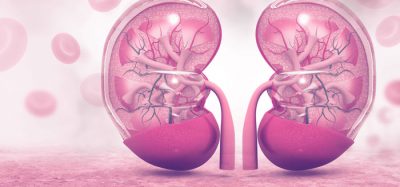Anti-obesity drug shrinks fat without suppressing appetite
Posted: 5 January 2018 | Dr Zara Kassam (Drug Target Review) | No comments yet
Researchers have discovered a drug that has been shown to selectively shrink excess fat by increasing fat cell metabolism…


Researchers have discovered a promising developing drug that has been shown to selectively shrink excess fat by increasing fat cell metabolism. The drug significantly reduces body weight and blood cholesterol levels without lowering food intake in obese mice.
The researchers discovered a molecule that blocks this metabolic brake from operating in obese white fat cells. By blocking this metabolic brake, they were able to increase the metabolism within white fat cells.
Blocking the action of the fat cell brake provides an innovative ‘fat’-specific mechanism to increase cell metabolism and reduce the size of white fat deposits, thereby treating a root cause of obesity and related metabolic diseases
In the study, mice were fed a high-fat diet until they became obese and then received either the drug or a placebo. Following 10 days of drug treatment, researchers found that the obese mice receiving the actual drug lost more than seven percent of their total body weight and their white fat tissue mass and cell size decreased by 30 percent compared with the placebo group. In addition, blood cholesterol in drug-treated mice were lowered to normal levels, similar to those of non-obese mice.
Biomarkers aren’t just supporting drug discovery – they’re driving it
FREE market report
From smarter trials to faster insights, this report unpacks the science, strategy and real-world impact behind the next generation of precision therapies.
What you’ll unlock:
- How biomarkers are guiding dose selection and early efficacy decisions in complex trials
- Why multi-omics, liquid biopsy and digital tools are redefining the discovery process
- What makes lab data regulatory-ready and why alignment matters from day one
Explore how biomarkers are shaping early drug development
Access the full report – it’s free!
On the contrary, placebo-treated mice continued to accumulate white fat and gain weight throughout the study. Interestingly, mice in both the drug-treated and placebo groups consumed the same amount of food during the course of the study period, showing that the fat loss was not due to appetite suppression.
“Blocking the action of the fat cell brake provides an innovative ‘fat’-specific mechanism to increase cell metabolism and reduce the size of white fat deposits, thereby treating a root cause of obesity and related metabolic diseases,” said senior author Harshini Neelakantan, a UTMB research scientist in the department of biochemistry and molecular biology. “These initial results are encouraging and support further development of this technology as a new and more effective approach to combating metabolic diseases.”
“As fat cells grow larger, they begin to overexpress a protein that acts as a metabolic brake that slows down fat cell metabolism, making it harder for these cells to burn accumulating fat,” said senior author Stanley Watowich, UTMB Associate Professor in the department of biochemistry and molecular biology. “In addition, as the fat tissue expands, they secrete greater amounts of hormones and pro-inflammatory signals that are responsible for several chronic diseases, including type 2 diabetes and cardiovascular disease.”
The study has been published in Biochemical Pharmacology.
Related topics
Drug Development, Drug Discovery, Drug Discovery Processes, Drug Targets, Research & Development
Related conditions
Obesity
Related people
Harshini Neelakantan, Stanley Watowich








